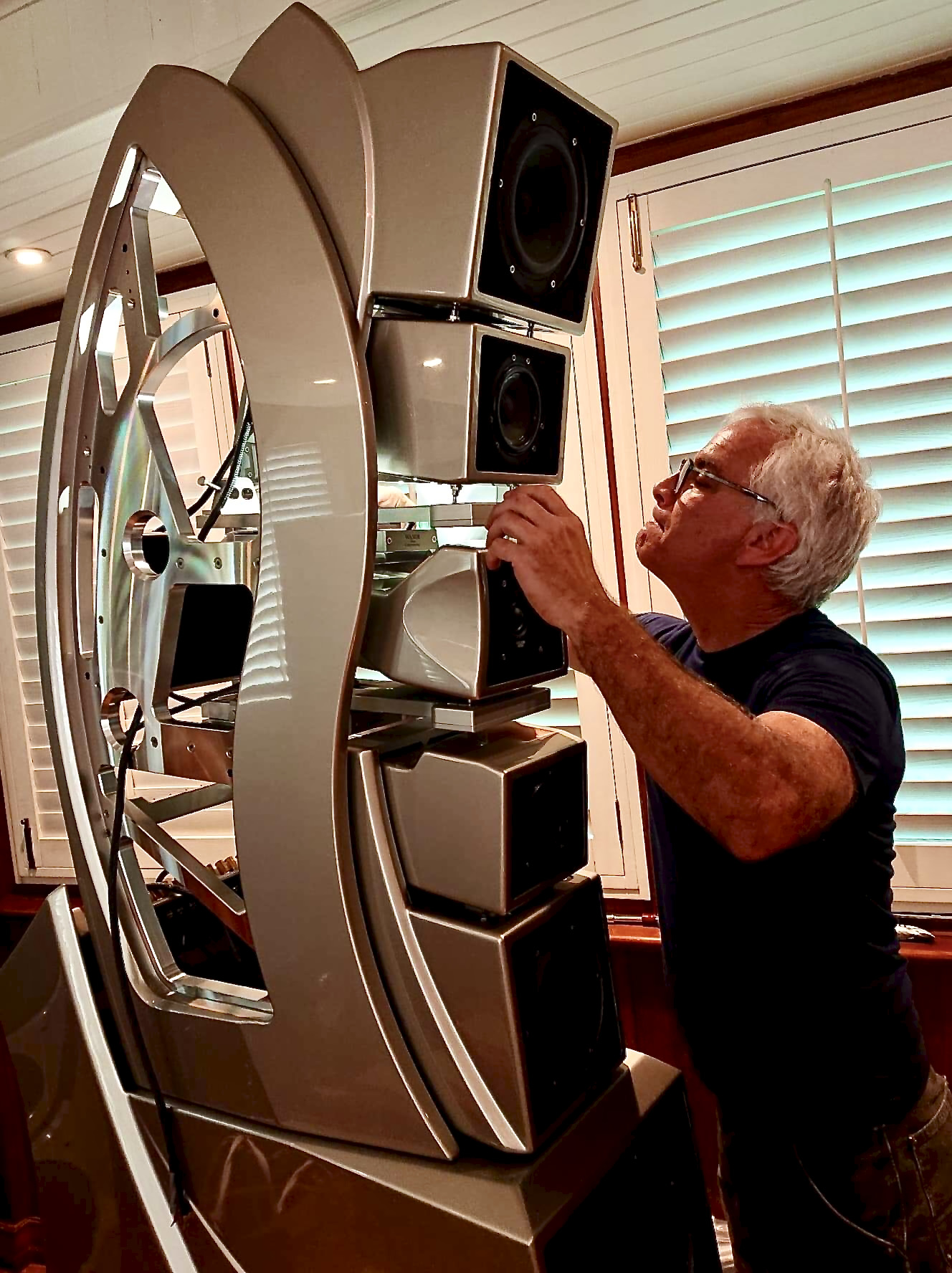 That sounds like I’m dissing the audiophile stuff, but I’m not. When the system is working and its delivering music, it’s delivering all that audiophile stuff too. It’s just that the qualities we value as audiophiles are now contributing properly to the whole, rather than being the reason we listen. I use classical music a lot during set-up. It’s because if you choose the recordings carefully, they’re a reasonable reference point, a single event happening in a coherent acoustic space. Yes, it matters that I can hear where the different instruments are: that I can hear the space between them; that there’s proper harmonic and textural development; that the bass has weight and that there’s proper dynamic range. All those individual aspects of performance matter. But once you have a really coherent whole, they are all just part of it. That overall organisation and presentation is what takes precedence. Maybe the basses are moved to the left side of the orchestra on this recording. Maybe the second violins are on the right. There is no one, fixed orchestral make up or lay-out. A properly set-up system tells you all that, just as you hear it at a live performance. But it tells you as a way of making sense of what’s happening in the music, rather than as an end in itself. Get the system really dialled in and maybe now you can count the double basses. It might be impressive or fun, but that’s not what’s important. The fact that you can count them is a function of the clarity with which the system is reflecting their relationship to the other instruments and their contribution to the music. It’s all about the relationships within the orchestra – or band – and that’s what matters, whether you listen to classical or jazz, pop or rock music.
That sounds like I’m dissing the audiophile stuff, but I’m not. When the system is working and its delivering music, it’s delivering all that audiophile stuff too. It’s just that the qualities we value as audiophiles are now contributing properly to the whole, rather than being the reason we listen. I use classical music a lot during set-up. It’s because if you choose the recordings carefully, they’re a reasonable reference point, a single event happening in a coherent acoustic space. Yes, it matters that I can hear where the different instruments are: that I can hear the space between them; that there’s proper harmonic and textural development; that the bass has weight and that there’s proper dynamic range. All those individual aspects of performance matter. But once you have a really coherent whole, they are all just part of it. That overall organisation and presentation is what takes precedence. Maybe the basses are moved to the left side of the orchestra on this recording. Maybe the second violins are on the right. There is no one, fixed orchestral make up or lay-out. A properly set-up system tells you all that, just as you hear it at a live performance. But it tells you as a way of making sense of what’s happening in the music, rather than as an end in itself. Get the system really dialled in and maybe now you can count the double basses. It might be impressive or fun, but that’s not what’s important. The fact that you can count them is a function of the clarity with which the system is reflecting their relationship to the other instruments and their contribution to the music. It’s all about the relationships within the orchestra – or band – and that’s what matters, whether you listen to classical or jazz, pop or rock music.
We are pattern recognition animals. We recognise when a pattern is correct and, we can recognise or ‘correct’ a pattern that’s not quite right. It’s all about the pattern as a whole. It’s not about one aspect of the sound or another. My job is to correct the patterns produced by the system. Correct them so that they reproduce the pattern captured in the original recording. The better I do my job, the easier it is to recognise those patterns and, when the system’s right, you don’t need to know how a recording was made, because it just sounds right too.
Which partly explains why so many systems don’t sound right. The bigger the system, the higher the resolution, the clearer its reproduction. But if that reproduction is fractured or bits of it are misplaced, those bigger systems resolve those discontinuities just as faithfully as they do everything else. And our brains don’t just recognise those discontinuities. On those big, complex, high-resolution systems, they really can’t miss them. The good news is that the systems themselves and the components in them are also the tools you need to put things right. You just need the right understanding and the right approach, which is exactly what hiring any set-up professional should provide.

